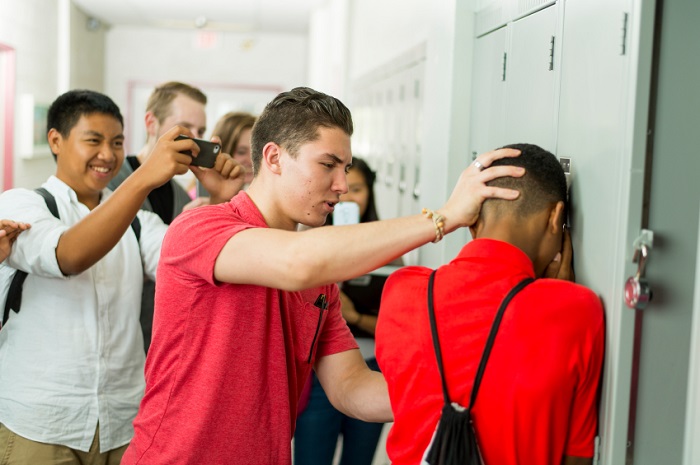IN THE MEDIA
Racist bullying incidents are a call to action
October 7, 2019 | Naomi Levin

The Age – October 6, 2019
The reverberations from media reports that two Melbourne students were subjected to humiliating anti-Semitic abuse have been felt in Jewish communities around the world. How could this happen in an enlightened society, ask well-meaning people.
A search for locally-produced school resources dedicated to bullying generally, and racism in schools specifically, shows there are reams of material available to teachers and principals. Why then is an esteemed American anti-Semitism researcher calling for her supporters to email their thoughts directly to one of the school principals involved? Why is the communications team at the City of Melbourne sending messages of reassurance to Jewish tourists that Melbourne is a diverse and safe city in response to their concerns about planned visits?
Victoria’s Education Minister, James Merlino, has called for a review into the reports of abuse against the five-year-old and the 12-year-old. Merlino has pledged to meet with the families involved and with Jewish community representatives to better understand the incidents. He said $9.5 million had been spent on anti-bullying initiatives. Commendably, he said the Victorian government stood ready to make further changes to guard against growing anti-Semitism.
The question remains, however: if there is so much assistance available to help schools deal with these issues, why do these incidents – and certainly others like them that have not received media attention – continue to occur?
The Victorian Department of Education and Training has an up-to-date set of bullying resources, including pages under the title “racist bullying”.
The Department provides information sheets for teachers on both preventing and responding to racist bullying. These sheets link through to pages of teaching resources that fit into the curriculum on “intercultural capability”, which – in layman’s terms – is learning about cultural practices and cultural diversity. These resources are segmented into appropriate categories for students from foundation to Year 10.
The teaching resources on the Department of Education and Training website are supplemented by factsheets on racist bullying specifically written for parents and for students. Education departments from other states have developed similarly comprehensive sets of material.
A quick search reveals many, many similar educational resources available to teachers and principals. There is the Australian Human Rights Commission’s “Racism. It Stops With Me” web portal, which provides teaching resources for all levels, including kindergarten children. The Immigration Museum provides lessons and ideas to help school students learn more about the cultures and identities of the many groups who live in Australia. There are all the privately-funded programs, from the anti-racism Courage to Care program, to the anti-bullying Alannah and Madeline Foundation. And then there are the specific programs to deal with antisemitism, including visits to Jewish and Holocaust museums and educational support provided by Jewish community organisations.
What is the point of detailing this long list of admirable, well researched and painstakingly developed teaching resources? To point out that despite our best intentions, children are still being racially humiliated at school. Despite the hard work being done by reputable authorities to produce anti-racism teaching resources, these messages are not always filtering down into our schools.
Developing education resources is not enough on its own. Government and non-government schools need to be actively implementing and promoting these programs as a core activity.
Of course, it is inappropriate to detail the horrors of racial violence to young children, and that should not be advocated. But from the earliest years of schooling, students need to be educated on the positives of diversity in Australian society. They must be taught – and reminded – that Australians can look different and believe in different deities. They need to be taught – and reminded – that everyone must be treated with respect.
The recent events remind us that even though the resources are available, neither time nor adequate support is available in already busy schools to teach these valuable life lessons.
A step into a Victorian government school classroom today will see children of many races, ethnicities and creeds. A girl in a headscarf will sit next to a boy from a Jewish family. A boy with Chinese-speaking parents will complete his work across the desk from a girl with Hindi-speaking parents. It is gratifying to see for all of us who recognise the benefits of a harmonious, multicultural Australia.
But the recent incidents are a call to action. They remind us that schools must actively teach the dangers of racist bullying. In addition, we must promote the responsibilities of multiculturalism – to offer respect to others and accept the values of a free society.
Additionally, when confronted with racist bullying, schools must address it as racist bullying. They must reach out to take advantage of the wealth of material available to ensure we are raising the next generation to be kind to their peers, regardless of their heritage.





